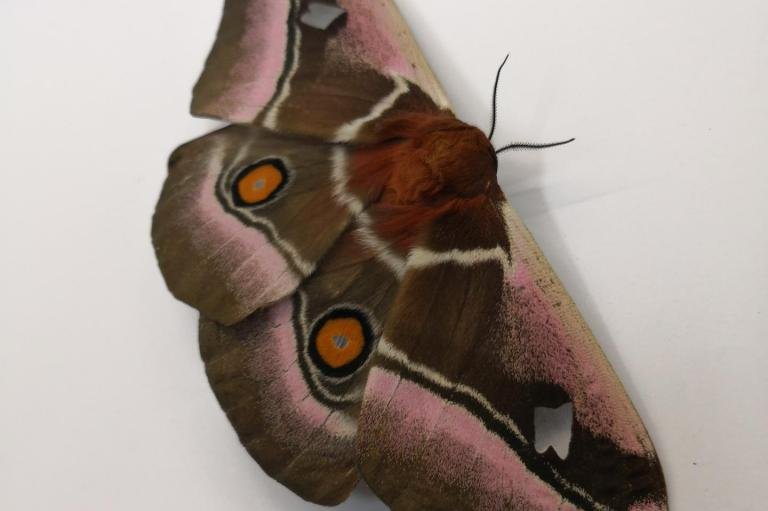Fur on the thorax and wing joints of two deaf moth species absorbs ultrasound, working like acoustic camouflage that helps the insects evade hunting bats. Photo by Thomas Neil
Nov. 6 (UPI) -- The fur on the thorax of some moths absorbs the sound waves emitted by bats and their sonar systems, making them harder to detect, according to new research by scientists at Bristol University in England.
Some moths boast ears capable of recognizing bats' ultrasonic signals, helping them avoid predation. But many moth species are deaf. Without the ability to hear swooping bats, deaf moths must rely on other defense strategies.
Several Bristol researchers, including Thomas Neil, who studies bioacoustics, were interested in learning more about these alternative defense mechanisms.
"Bats and moths have been involved in an acoustic arms race for 65 million years, we were interested in how deaf moths might try to increase their survival chances against bats," Neil told UPI. "Any defense they had would have to be passive, and so dampening the echoes returning to a hunting bat seemed like a plausible strategy."
Neil and his colleagues measured the acoustic qualities of fur found on the thoraxes and wing joints of moths and butterflies. Their analysis showed moth fur was thicker and denser than butterfly fur. In the lab, tests showed moth fur was better at absorbing ultrasonic waves.
The less a bat's acoustic signals echo off an object, the harder it is for a bat to recognize the object.
"The study is a sort of a proof of concept, we've shown that the fur on the thorax can absorb ultrasound, but the extent to which it is present amongst the many moth species is currently unknown," Neil said.
Though the new research featured two deaf moth species, Antherina suraka and Callosamia promethea, it's possible some species can both hear approaching bats and hide themselves using sound-absorbing fur.
"There's no reason for the stealth coating and the ability to hear to be mutually exclusive, it would still be of a benefit for a moth with ears to also be camouflaged acoustically," Neil said.
Neil and his colleagues are preparing to present their research this week at the 176th Meeting of the Acoustical Society of America.
The fur's acoustic qualities could prove beneficial for non-moths, too.
"Lessons learned from how the thorax fur of moths absorbs ultrasound could inspire a new design of noise insulation material," Neil said. "The size of the material would have to be scaled up so that the sounds it was absorbing were more relevant for human hearing, but its performance could better those of current sound insulating materials."















